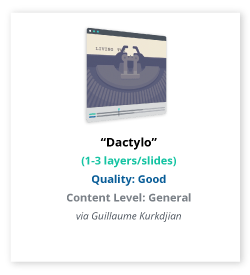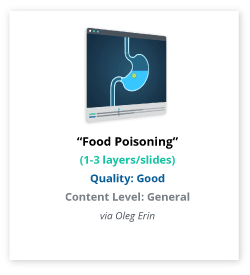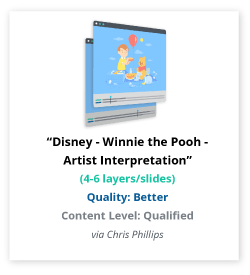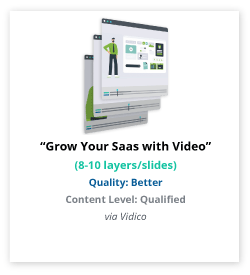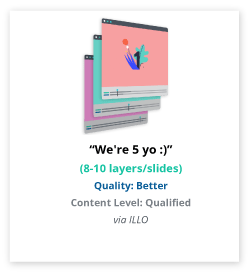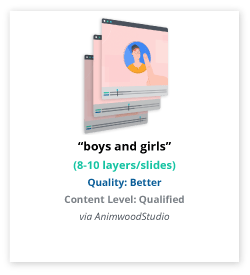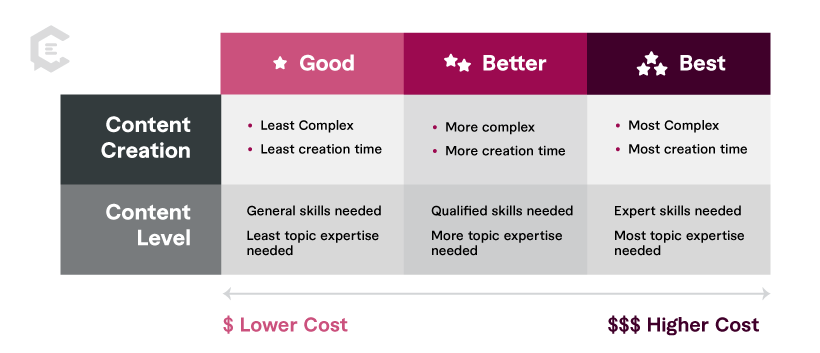We’re here to help you choose the most appropriate content types to fulfill your content strategy. In this series, we’re breaking down the most popular content types to their most basic fundamentals — simple definitions, clarity on formats, and plenty of examples — so you can start with a solid foundation.
What are motion graphics?
Motion graphics are animations often used in ads, movie title sequences and other multimedia projects with movable text often used as graphical elements, adding depth to a story.
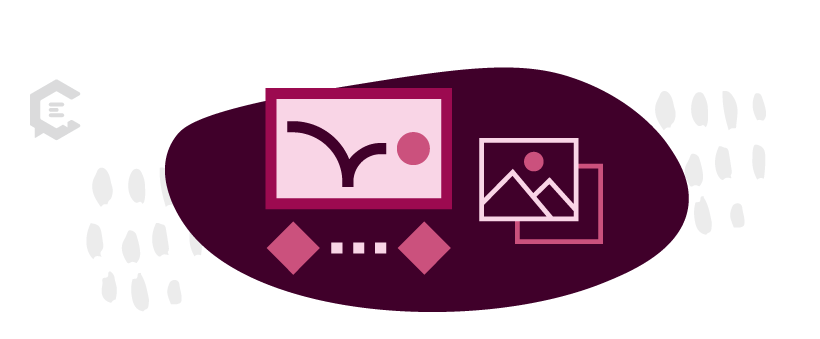
The long and short of it
Motion graphics can range from simple GIFs to full-on title sequences in videos. Since they can be made in any number of programs for a variety of media, their formats and complexity can vary widely. For starters, though, you can think of complexity in terms of image layers, regardless of the final format.
A general guide to motion graphics complexity:
- Simple (1-3 layers/slides)
- Standard (4-6 layers/slides)
- Complex (7-10 layers/slides)
Why should a business use motion graphics?
Much for the same reason that an audience would rather see a presentation move — versus one shot up by bullet points — motion graphic videos have skyrocketed in popularity as a powerful storytelling method in terms of inspiring, delighting and spurring customers to action.
Given the newfound ease and lowered cost to creating motion graphics, combined with the ease of production using scripting and voice-over narration, it looks like motion graphics are here to stay as a way to tell stories (at a relatively cheap cost). Especially as an alternative to live action, which can be more costly.
Popular use cases
As an alternative to live action, which can get pricey depending on how you do it (even in a “normal” production climate), motion graphics are now being used more than ever to produce:
- Ads
- Product marketing
- How-to videos
- Presentation
- Promotional videos
- Explainer videos
Businesses that could use motion graphics…
Businesses looking to create cost-effective ads or digital media for their content pipelines and marketing channels will get more bang for their buck using motion graphics versus static slides.
Motion graphics examples – simple
Motion graphics examples – standard
Motion graphics examples – complex
Understanding content quality in examples
Our team has rated content type examples in three degrees of quality (Good, Better, Best) to help you better gauge resources needed for your content plan. In general, the degrees of content quality correspond to our three content levels (General, Qualified, Expert) based on the criteria below. Please consider there are multiple variables that could determine the cost, completion time, or content level for any content piece with a perceived degree of quality.
